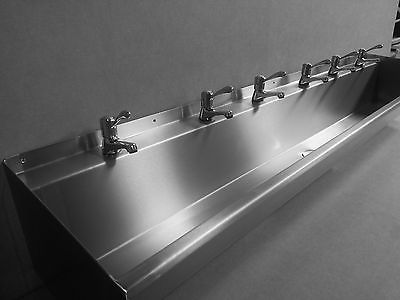Commercial Kitchen Drain Requirements

Your kitchen should be equipped to capture grease from sinks woks deep fryers floor drains and other fixtures to prevent clogging pipes and.
Commercial kitchen drain requirements. These sinks are typically direct drained. One mop sink for obvious reasons. This means the inlet must be vertical and the trap arm outlet must be horizontal but with a minimum slope toward the drain of 1 4 inch per foot and a maximum slope that is no more than the pipe diameter. Most commercial kitchen design projects will require at minimum 4 types of sinks.
140 degrees f hot water is required due to dishwashers requiring 180 degrees f water for final rinse and a booster. Floor sinks and floor drains shall be suitable flanged to provide a water tight joint in the floor slab floor drains shall be installed in commercial kitchens. It must be level or water could drain out of it. At least one triple compartment sink will be required.
This is the complete new york city health code for food establishments. Kitchen drainage drainage should be one of the top items on the list when designing commercial kitchens. The condensation drain coming from the refrigeration equipment is normally accompanied by a nasty slime and must not be communicating with the drain from the ice bin. At least one mop basin will be required in or near the kitchen.
4 diameter alterations greater than 50 shall have accessible water closets urinals and lavs. Drains need to be installed in the correct location and fit the intended purpose at the beginning of the project. May be either floor mounted as in the image above or similar in design to a utility room sink you might find in a residential building. Commercial kitchen code requirements.
Floor shall slope to drain. The drains must be separate not tied together. An air gap or air break are both acceptable since there. Effective drainage is critical to deter bacteria growth from pooling liquids and other food debris.














































